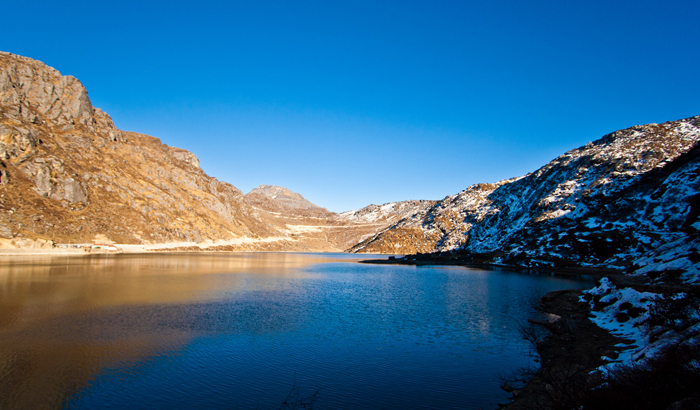Natural Wonders of North East India
The eastern-most region of India collectively referred to as Northeast India is known for its extensively diverse lineage of flora and fauna and poetry-inspiring scenic beauty.
The seven sisters clubbed into eight states, namely, Arunachal Pradesh, Assam, Manipur, Meghalaya, Mizoram, Nagaland, Sikkim and Tripura can be a treat to tourists due to the plethora of destination choices they offer. In order to tap the untapped tourism potentials of the region, the Ministry of Tourism has made amends to promote the natural wonders of the region.
From dense jungles to magnificent rivers, to the vast stretches of breathtaking mountains to fertile plains, this region is blessed with diverse topographical features. Here are eight natural wonders of the region.
- Ziro Hill Station, Arunachal Pradesh
Ziro is a hill station that travellers seek refuge to for inner peace of mind. The pollution-free environment of the region guarantees to rejuvenate the eyes and purify the lungs. Declared as a tentative entry in the World Heritage Site by UNESCO, Ziro has a rich culture that reflects the spirit of the famous Ziro Festival. The arduous Kile Pakho Ridge and the cushioning Bamboo groves add to the beauty of the hill range. The place is inhabited by the Apatani tribe from which the Apatani plateau draws its name.
- Majuli Island, Assam
Majuli Island is the largest river island in the world formed by the interminable Brahmaputra in the south and the Kherkutia Xuti with its tributary Subansiri in the north. With the alluring presence of mountains, colossal forest covers, exuberant scenery and yellow sand beneath the feet, this natural wonder is one of the most sought after tourist destinations in the entire region. This is the perfect spot to relax and cleanse your aura. The place is home to several migrating birds and is an absolute treat for bird-lovers. The hub of neo-Vaisnavite culture, the various ritualistic festivals of the place is a crowd puller.
- Floating Lake, Manipur
Moirang houses the biggest freshwater lake in the entire North East region widely known as the Floating Lake or the Loktak Lake. One looks forward to the luscious vegetation and picture perfect greenery around the Loktak Lake which is enveloped by mountains on all sides. The Loktak Lake is seen as the bed for a wide mass of foliage. The appearance of these masses is such that it often passes off as islands owing to the extent of stratification.
- Nohkalikai Falls, Meghalaya
The tallest plunge waterfall in India, Nohkalikai Falls in Meghalaya is located near Cherrapunji, the wettest region of India. The 340-metre high waterfall is a major tourist attraction of the region especially during the wet season when the rainwater feeds the waterfall. The bottom of the falls is met by a naturally occurring plunge pool which is green in colour.
- Phawngpui or the Blue Mountain, Mizoram
The Phawngpui or the Blue Mountain is the highest mountain peak in the Lushai Hills that scales up to 2,157 meters. Rumoured to be haunted it is held sacred by the inhabitants of Mizoram. The mountains serve as the breeding grounds of diverse wildlife including the cloud leopard. The wide horizons and never-ending stretches make the sunrises and sunsets an enriching experience that one treasures for a lifetime. The photographers have a gala time capturing the scenic representation of this one.
- Dzukou Valley, Manipur and Nagaland
A paradise for mountain expeditions, this valley is located at a height of 2,452 meters above the sea level, behind the Japfu Peak mapped in Nagaland. The climate of the area is moderate and soothing almost always throughout the year making it a favourite among the hikers. However, currently, Dzukou Valley is reachable only by trekking for five hours across the span of Manipur and Nagaland’s boundaries.The valley is widely known for its seasonal flowers. Dzukou lily, the native flower is rare and popular globally.
- Tsomgo, Sikkim
The natural lake in Gangtok is situated at an altitude of 12,400 ft. A jagged road through the rocky mountains takes one to the Tsomgo Lake which translates into “source of the water” in Bhutia language. The lake known for its beauty stays frozen in winter while in spring it is marked by blooming flowers that grow along its perimeter. The lake, considered sacred is of special importance to the Jhakris (faith healers) of Sikkim.
- Jampui Hills, Tripura
The Jampui Hills is the highest hill range in Tripura and is commonly referred to as the “permanent seat of eternal spring.” Situated at an altitude of 3,000 feet above the sea level, Jampui Hills is known extensively for its serene climatic condition that is favourable for sustaining the vast stretches of orange gardens. The hill range is also home to the Lushai and Reang tribe, having a total of 11 villages.










